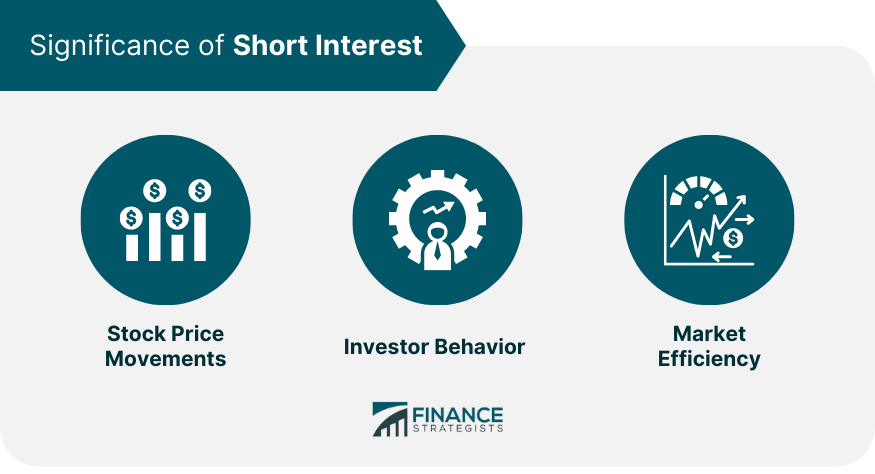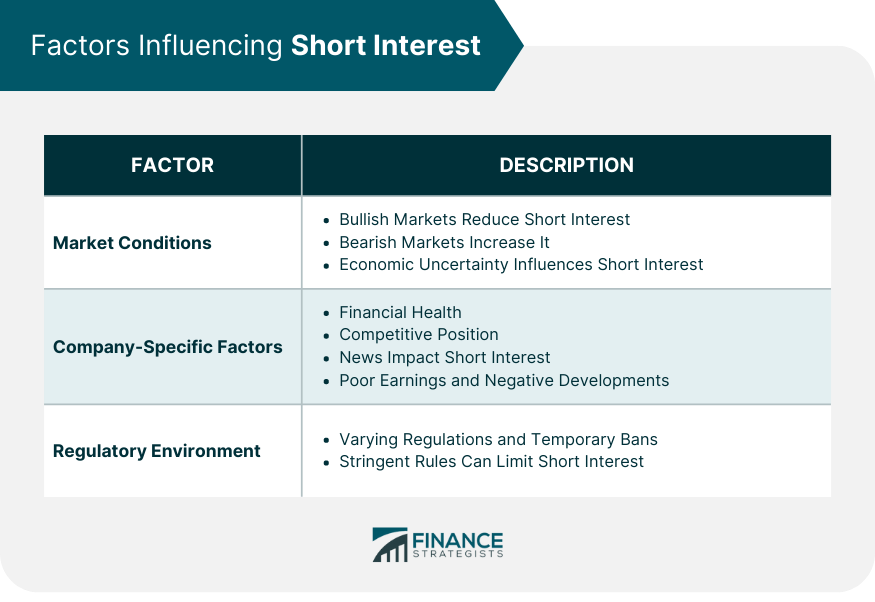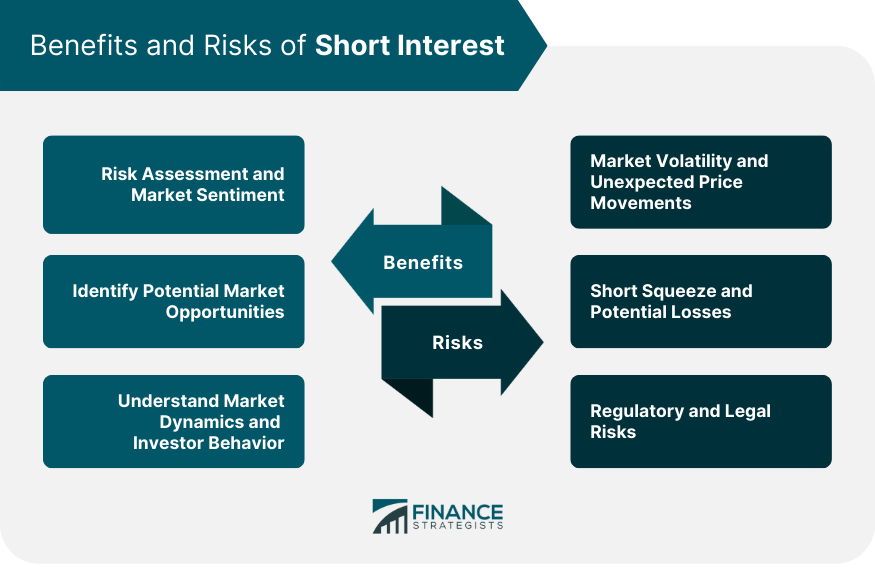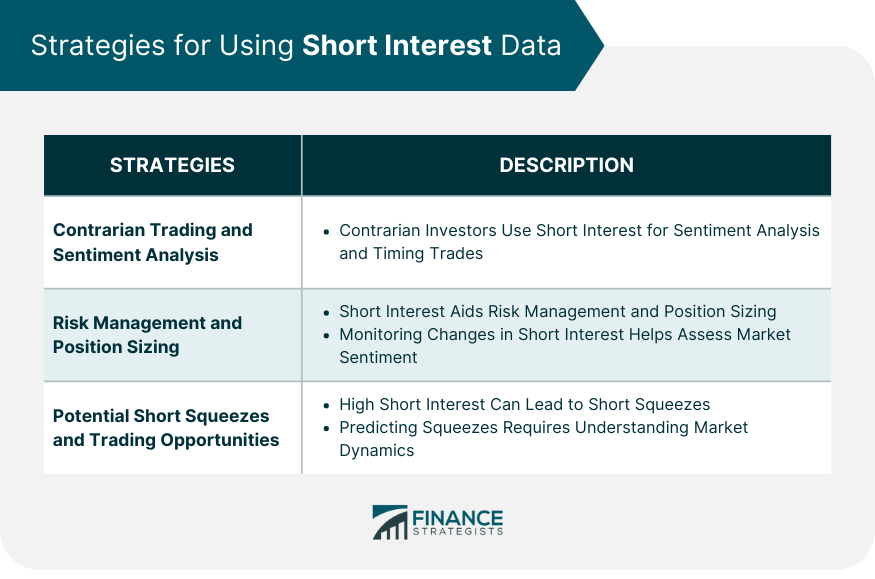Short interest refers to the number of shares in a company that has been sold short but haven't been covered or closed out. Essentially, it's the total number of shares that investors have sold short but haven't repurchased to close their short position. This figure gives a glimpse into the market sentiment regarding a specific stock, and it's typically expressed as a percentage. Short interest can offer valuable insight into investor sentiment. A high short interest indicates that many investors expect the stock's price to fall, while a low short interest implies the opposite. This data can be utilized by both individual investors and financial institutions to get a broader sense of market sentiment. The short interest provides investors with insights into the market sentiment for a particular stock. Higher short interest often signifies negative sentiment, where a large proportion of investors expect the stock's price to decline. Conversely, a lower short interest suggests a more optimistic market outlook, indicating that fewer investors are betting against the stock. Short interest plays a crucial role in determining stock price movements. As it reflects the percentage of a company's stocks that are currently shorted, it provides an indication of market sentiment. A high short interest, suggesting many investors expect the stock to depreciate, can exert downward pressure on the stock price. Inversely, if a stock with high short interest begins to appreciate, short sellers might rush to cover their positions to minimize losses, creating a "short squeeze." This sudden increase in buying activity can further push the price up, illustrating the profound impact short interest can have on stock price movements. In addition to influencing stock prices, short interest can also profoundly affect investor behavior. Investors often monitor short interest to gauge market sentiment and make investment decisions accordingly. If a stock has a high short interest, it can deter potential buyers who interpret the data as a sign of looming price decline. Moreover, a high short interest might attract contrarian investors who aim to profit from the potential short squeeze. These investors bank on the fact that if the price starts rising, short sellers will have to buy back the shares, leading to an even steeper price increase. The existence of short selling and the corresponding short interest contribute significantly to the overall efficiency of the market. Short sellers often conduct thorough research and due diligence before initiating their positions. Their goal is to identify overvalued stocks, thus helping correct price misalignments in the market. High short-interest levels can signal to other market participants that a particular stock might be overvalued. This disclosure of information helps maintain price accuracy and contributes to market efficiency by preventing the persistence of inflated prices. Short interest can be significantly influenced by overall market conditions. For instance, in a bullish market, the general optimism can lead to reduced short interest as fewer investors expect prices to fall. On the contrary, in a bearish market, short interest may increase as more investors anticipate a downward price movement. The wider economic environment can also influence short interest. During periods of economic uncertainty or instability, investors might increase their short positions, anticipating that stocks will decrease in value, leading to higher short interest. Short interest can also be influenced by factors specific to a particular company. These can include aspects such as the company's financial health, its competitive position, or news related to its management or products. For example, if a company is expected to report poor earnings, it might attract more short sellers, increasing the short interest. Similarly, if there are rumors or news of mismanagement or negative developments within the company, this can lead to an increase in short interest. Therefore, any factor that can potentially influence a company's stock price can also affect its short interest. The regulatory environment plays a significant role in shaping short interest. Different countries have different regulations related to short selling. Some regions have stringent rules and restrictions on short selling, which can limit short interest. For instance, during times of severe market turbulence, some regulators might temporarily ban short selling to prevent further market destabilization. Regulations can also impose specific disclosure requirements related to short selling. Some jurisdictions might require the public disclosure of significant short positions, which can influence other market participants and impact the overall short interest. Analyzing short-interest data can provide valuable insights for risk assessment and gauging market sentiment. A high short interest indicates that a large number of investors believe a particular stock's price will decrease. This could signal a potential red flag, suggesting that the stock might be overvalued, thus helping in risk evaluation. Furthermore, by gauging market sentiment, investors can identify trends and make informed decisions. For instance, if a stock is experiencing increasing short interest, it might suggest that sentiment is turning increasingly bearish, prompting a potential review of investment strategy. Short interest data can also help in identifying potential market opportunities. A high short interest could potentially lead to a short squeeze, a rapid increase in the price of stock primarily due to short sellers covering their positions. This situation can provide profitable opportunities for investors who have correctly anticipated the squeeze. In addition, as high short interest can signal an overvalued stock, it can also present an opportunity for investors to short-sell the stock themselves, potentially profiting from the subsequent price decline. Short interest figures offer a unique window into market dynamics and investor behavior. By observing the changes in short interest over time, one can gain insights into how investor sentiment is shifting, which can be a crucial input for making investment decisions. Moreover, understanding how high or low short interest affects investor behavior and market dynamics can be a powerful tool. For instance, in cases of extreme short interest, the potential for a short squeeze or other market anomalies can create unique investment opportunities or risks. While short interest provides valuable insights, it also comes with certain risks. One such risk is associated with market volatility and unexpected price movements. A high short interest can sometimes lead to erratic price movements, especially if there's a sudden shift in market sentiment or unexpected positive news about the company. For instance, if a heavily shorted stock releases positive news, it could lead to a rapid price increase as short sellers scramble to cover their positions, resulting in a short squeeze. This sudden price fluctuation can lead to substantial losses for those holding short positions. One of the major risks associated with high short interest is the potential for a short squeeze. A short squeeze occurs when a heavily shorted stock starts to increase in price, causing short sellers to buy the stock to cover their positions and prevent further losses. This surge in buying pressure can cause the stock price to increase dramatically in a short period. The potential losses from a short squeeze can be substantial. Unlike a long position, where the maximum possible loss is the amount invested, a short position has theoretically unlimited loss potential, as a stock's price can keep rising indefinitely. Short selling also comes with regulatory and legal risks. Some jurisdictions have strict rules and regulations regarding short selling, and non-compliance can result in severe penalties. For instance, if a regulator imposes a temporary ban on short selling during a market downturn, investors with short positions may find themselves unable to close their positions. Moreover, naked short selling, the practice of shorting stocks without first borrowing the shares, is illegal in many jurisdictions. Engaging in such practices can expose investors to significant legal risks. Contrarian investors go against the prevailing market sentiment, buying stocks that are widely disliked and shorted. These investors believe that the market overreacts to bad news, creating buying opportunities. Short interest data can also be used for sentiment analysis. High short interest indicates negative sentiment, while low short interest signals positive sentiment. Understanding the prevailing sentiment can help investors time their trades and predict potential price reversals. Short-interest data can also be used for risk management and position sizing. If an investor is considering shorting a stock, understanding the short interest can help assess the risk of a short squeeze. If the short interest is high, the risk of a short squeeze is higher, which might warrant a smaller position to limit potential losses. Moreover, by monitoring changes in short interest, investors can assess whether market sentiment is changing. If short interest is decreasing, it might signal that sentiment is improving, which could warrant adjusting the position size or closing the short position. High short interest can often lead to short squeezes, presenting unique trading opportunities. Investors who correctly anticipate a short squeeze can buy the stock beforehand and profit from the rapid price increase. However, successfully predicting short squeezes can be challenging and requires a thorough understanding of market dynamics. Factors to consider include the overall market sentiment, company-specific news, and the level of short interest relative to the stock's trading volume. Short interest is the number of shares in a company that has been sold short but haven't been covered or closed out. It provides insights into investor sentiment and market dynamics. By analyzing short-interest data, investors can assess risk, identify potential market opportunities, and understand investor behavior. High short interest often indicates negative sentiment and can lead to market volatility and unexpected price movements. Short squeezes pose risks to short sellers, as rapid price increases can result in substantial losses. Additionally, regulatory and legal risks are associated with short selling, and non-compliance can lead to severe penalties. Strategies for utilizing short-interest data include contrarian trading, sentiment analysis, risk management, position sizing, and identifying potential short squeezes. Understanding short interest and its implications empowers investors to make informed decisions and navigate the complexities of the market effectively.What Is a Short Interest?
Significance of Short Interest
Stock Price Movements
Investor Behavior
Market Efficiency

Factors Influencing Short Interest
Market Conditions
Company-Specific Factors
Regulatory Environment

Benefits of Short Interest
Risk Assessment and Market Sentiment
Identifying Potential Market Opportunities
Understanding Market Dynamics and Investor Behavior
Risks of Short Interest
Market Volatility and Unexpected Price Movements
Short Squeeze and Potential Losses
Regulatory and Legal Risks

Strategies for Using Short-Interest Data
Contrarian Trading and Sentiment Analysis
Risk Management and Position Sizing
Potential Short Squeezes and Trading Opportunities

Conclusion
Short Interest FAQs
Short interest is the total number of shares that have been sold short but have not yet been covered or closed out. It provides an indication of market sentiment for a specific stock.
High short interest can exert downward pressure on a stock's price as it indicates that many investors expect the price to fall. Conversely, if a stock with high short interest starts to rise, short sellers may rush to cover their positions, causing the price to increase further.
Short interest can be influenced by several factors, including market conditions, company-specific factors, and the regulatory environment.
Analyzing short interests can aid in risk assessment, identifying potential market opportunities, and understanding market dynamics and investor behavior.
High short interest can lead to potential short squeezes and substantial losses for short sellers. It is also associated with market volatility and regulatory and legal risks.
True Tamplin is a published author, public speaker, CEO of UpDigital, and founder of Finance Strategists.
True is a Certified Educator in Personal Finance (CEPF®), author of The Handy Financial Ratios Guide, a member of the Society for Advancing Business Editing and Writing, contributes to his financial education site, Finance Strategists, and has spoken to various financial communities such as the CFA Institute, as well as university students like his Alma mater, Biola University, where he received a bachelor of science in business and data analytics.
To learn more about True, visit his personal website or view his author profiles on Amazon, Nasdaq and Forbes.















